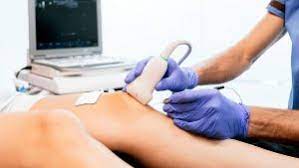Typically, your doctor will begin treatment by doing a full physical exam to assess the symptoms and the severity of your joint pain. This exam will include checking for swelling, redness, warmth, and ability to move the joint. Other tests, including X-rays and MRIs, may also be ordered. These tests can help your doctor determine the root cause of your joint pain and suggest appropriate treatments.
Joint pain is an unpleasant sensation that can happen anywhere two or more bones connect. This pain can be intermittent or constant. It may be accompanied by other symptoms such as numbness, tingling, swelling, and loss of motion. If the pain is chronic or severe, it can limit your ability to perform certain activities and affect your quality of life. If you wish to learn more about this, visit Jacksonville regenerative medicine
 Physical therapy can be an effective joint pain treatment. This type of therapy includes customized stretching and strengthening exercises to ease joint pain and improve mobility. Some people may also need to use a brace for knee pain, which can help support and stabilize the knee. Home treatments are also effective for managing joint pain. Alternating hot and cold treatments can help reduce joint stiffness. You may also want to consider using heated blankets on stiff joints to help them feel better at night.
Physical therapy can be an effective joint pain treatment. This type of therapy includes customized stretching and strengthening exercises to ease joint pain and improve mobility. Some people may also need to use a brace for knee pain, which can help support and stabilize the knee. Home treatments are also effective for managing joint pain. Alternating hot and cold treatments can help reduce joint stiffness. You may also want to consider using heated blankets on stiff joints to help them feel better at night.
Despite the wide range of treatments for joint pain, it is important to seek medical advice if you experience joint pain. While most joint pain is temporary, it may be indicative of more serious disease. Depending on the cause of the pain, your doctor may recommend x-rays or ultrasounds. In severe cases, your doctor may recommend keyhole surgery.
Other treatments for joint pain include medications to relieve the symptoms and improve joint function. Over-the-counter drugs can relieve pain by reducing inflammation. NSAIDs such as ibuprofen or naproxen sodium are also effective for milder forms of joint pain. However, you should avoid taking stronger NSAIDs, as they can cause stomach and heart problems. You may also use dietary supplements to help alleviate your joint pain.
Aside from over-the-counter medications, physical therapy can also help alleviate joint pain by strengthening the joints and restoring their function. Physical therapy may also help you exercise to relieve the pain and improve mobility. During these exercises, you should rest and elevate the limb that is in pain. You may also want to try heat or cold therapy to reduce inflammation and swelling.
If pain is chronic, your doctor may recommend total joint replacement. Total joint replacement is an option if you have severe joint pain and can’t tolerate daily activities. This procedure involves taking the damaged joint and replacing it with an artificial one. This procedure is most common for knees and hips. A joint fusion is another option. It involves locking the ends of bones in the joint together. The new joint heals to mimic the structure and function of a natural joint.
The most common form of arthritis is osteoarthritis, which causes the breakdown of the cartilage in the joints. Cartilage protects and cushions the bones in the joint, and when it breaks down, it causes pain and stiffness. Other forms of arthritis can cause joint pain as well, including gout.
